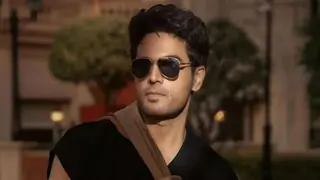Mangeshkar was featured in the Guinness Book of World Records from 1974 to 1991 for having made the most recordings in the world. The claim was that she had recorded approximately 25,000 solo, duet, and chorus-backed songs in 20 Indian languages between 1948 to 1974 (30,000 songs between 1948 and 1987, according to the 1987 edition). Over the years, while several sources have supported this claim, others have raised concerns over its veracity, claiming that this number was highly exaggerated and that Mangeshkar's younger sister, Asha Bhosle, had more song recordings than she had.[4]
Lata Mangeshkar was born in Sikh Mohalla,[5] Indore, in the Central India Agency (now part of Madhya Pradesh). Her father, Pandit Deenanath Mangeshkar who belonged to a Gomantak Maratha Samaj family from Goa, was a classical singer and theater actor. Her mother Shevanti (Shudhamati) who was from Thalner, Maharashtra, was Deenanath's second wife. The family's last name used to be Hardikar; Deenanath changed it to Mangeshkar in order to identify his family with his native town, Mangeshi in Goa. Lata was named "Hema" at her birth. Her parents later renamed her Lata after a female character, Latika, in one of her father's plays, BhaawBandhan.[6] Lata is the eldest child of her parents. Meena, Asha, Usha and Hridayanath are her siblings in sequence.
Mangeshkar took her first music lessons from her father. At the age of five, she started to work as an actress in her father's musical plays (Sangeet Natak in Marathi). On the first day in the school, she started teaching songs to other children. When the teacher stopped her, she was so angry that she stopped going to the school.[6] Other sources cite that she left school because they would not allow her to bring Asha with her, as she would often bring her younger
In 1942, when Mangeshkar was 13, her father died of heart disease. Master Vinayak (Vinayak Damodar Karnataki), the owner of Navyug Chitrapat movie company and a close friend of the Mangeshkar family, took care of them.
Mangeshkar sang the song "Naachu Yaa Gade, Khelu Saari Mani Haus Bhaari" which was composed by Sadashivrao Nevrekar for Vasant Joglekar's Marathi-language movie Kiti Hasaal (1942), but the song was dropped from the final cut. Vinayak gave her a small role in Navyug Chitrapat's Marathi movie Pahili Mangalaa-gaur (1942), in which she sang "Natali Chaitraachi Navalaai" which was composed by Dada Chandekar.[6] Her first Hindi song was "Mata Ek Sapoot Ki Duniya Badal De Tu" for the Marathi film, Gajaabhaau (1943). Mangeshkar moved to Mumbai in 1945 when Master Vinayak's company moved its headquarters there. She started taking lessons in Hindustani classical music from Ustad Amanat Ali Khan Bhendibazaarwale. She sang "Paa Lagoon Kar Jori" for Vasant Joglekar's Hindi-language movie Aap Ki Seva Mein (1946),[6] which was composed by Datta Davjekar. Mangeshkar and her sister Asha played minor roles Vinayak's first Hindi-language movie, Badi Maa (1945). In that movie, Lata also sang a bhajan, "Maata Tere Charnon Mein." She was introduced to music director Vasant Desai during the recording of Vinayak's second Hindi-language movie, Subhadra (1946).
Following the partition of India in 1947, Ustad Amanat Ali Khan Bhendibazaarwale migrated to newly formed Pakistan, so Mangeshkar started to learn classical music under Amanat Khan Devaswale. Pandit Tulsidas Sharma, a pupil of Ustad Bade Ghulam Ali Khan, also trained her.
After Vinayak's death in 1948, music director Ghulam Haider mentored her as a singer. Haider introduced Mangeshkar to producer Sashadhar Mukherjee, who was working then on the movie Shaheed (1948), but Mukherjee dismissed Mangeshkar's voice as "too thin."[6] An annoyed Haider responded that in the coming years the producers and the directors would "fall at Lata's feet" and "beg her" to sing in their movies. Haider gave Lata her first major break with the song "Dil Mera Toda," from the movie Majboor (1948).[6]
Initially, Mangeshkar is said to have imitated Noor Jehan, but later she developed her own style of singing.[6] Lyrics of songs in Hindi movies are primarily composed by Urdu poets and contain a higher proportion of Urdu words, including the dialogue. Actor Dilip Kumar once made a mildly disapproving remark about Mangeshkar's Maharashtrian accent while singing Hindi/Urdu songs; so for a period of time, Lata took lessons in Urdu from an Urdu teacher named Shafi.[7]
"Aayega Aanewaala," a song in the movie Mahal (1949) was composed by music director Khemchand Prakash and lip-synced on screen by actress Madhubala.





























